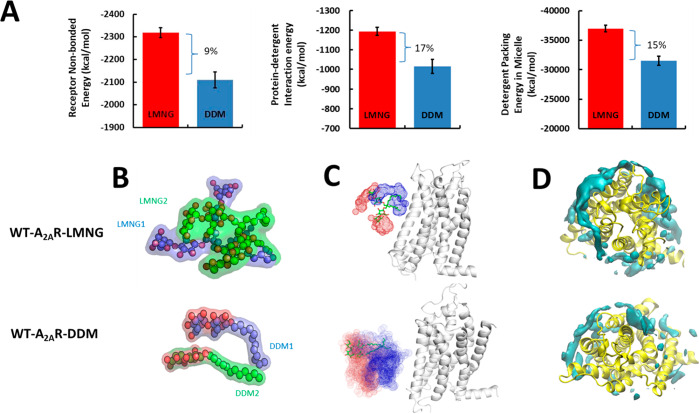Figure 5.
Effect of branched tail groups in LMNG compared to their unbranched counterpart DDM on the stability of the wild type A2AR (WT-A2AR). (A) Average nonbond interaction energy between the WT-A2AR and LMNG or DDM molecules averaged across the MD simulation trajectories. Also shown is the average nonbond interaction energy between the detergent molecules in LMNG and DDM receptor complexes. (B) Internal structure of a representative LMNG and DDM molecule in the WT-A2AR–LMNG and WT-A2AR–DDM RDCs. The two chains in LMNG or the two monomers of DDM are colored differently, and the oxygen atoms of the hydrophilic head group are colored red. (C) Spatial distribution plots of a typical LMNG or DDM molecule near the WT-A2AR during the MD simulations. The head group is colored red, and tail groups are colored blue. (D) Volumetric density of tail carbon atoms of detergent within 4 Å of each WT-A2AR.

